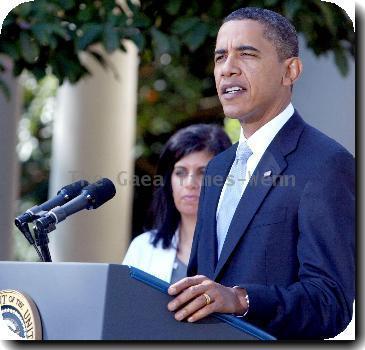First-time jobless claims rise on seasonal factors, but also reflect weak labor market
By Christopher S. Rugaber, APThursday, July 22, 2010
Elevated jobless claims point to weak labor market
WASHINGTON — Seasonal factors boosted new requests for unemployment benefits last week as the job market remains weak amid a slow economic recovery.
New claims for unemployment insurance jumped by 37,000 to a seasonally adjusted 464,000, the Labor Department said Thursday.
The sharp increase comes after claims fell steeply two weeks ago to their lowest level since August 2008. But much of that drop was driven by temporary seasonal factors and not an improving job market.
Two weeks ago, General Motors and other manufacturers reported fewer temporary layoffs than usual this time of year, a Labor Department analyst said. Last week’s rise partly reflects the fading of that trend.
Before seasonal adjustments, claims actually fell by 13,113 to 498,022, the department said. The government seasonally adjusts most economic data to filter out the impact of recurring, non-economic factors.
Still, new claims remain elevated. It’s a sign that jobs are scarce even as the economy slowly recovers from the worst recession since the 1930s.
Sal Guatieri, senior economist at BMO Capital Markets, said the report suggests that businesses will add a net total of less than 100,000 new employees in July. That’s not enough to quickly reduce the unemployment rate, he said.
“American companies … are just not hiring to any great extent,” he said. Many are still uncertain about the durability of the recovery, he said.
Requests for unemployment insurance have been stuck near 450,000 since the beginning of the year, after falling steadily from a peak of 651,000 in March 2009.
The weekly claims are considered a gauge of layoffs and an indication of employers’ willingness to hire.
In a healthy economy with rapid hiring, claims usually fall below 400,000.
The four-week average of claims, which smooths fluctuations, rose by 1,250 to 456,000, the department said.
A total of nearly 4.5 million people continued claiming unemployment aid, the department said. That was a drop of 223,000 from the previous week.
But that doesn’t include about 3.9 million people who received extended unemployment benefits the week of July 3, the latest data available. That figure fell by about 375,000 from the previous week because Senate Republicans had blocked an extension of long-term benefits for nearly two months.
The Senate voted Wednesday to continue the benefits through November, and the House is expected to approve a similar measure Thursday. That would clear it for President Barack Obama’s signature.
About 2.5 million people lost benefits due to the political impasse, but will now receive back payments because Congress restored the benefits retroactively.
The economy began recovering last summer, but recently the rebound has shown signs of faltering.
The housing market is slumping, consumers are cautious with spending and the impact of last year’s $787 billion stimulus package is fading.
Federal Reserve Chairman Ben Bernanke said Wednesday the unemployment rate would gradually decline this year but at a “somewhat slower” pace than the Fed projected in the spring.
The central bank forecasts the jobless rate will be between 9.2 percent and 9.5 percent in the final quarter of 2010.
Bernanke said persistent unemployment is “an important drag on household spending” as it reduces incomes and causes “uncertainty about job prospects.”
The unemployment rate fell to 9.5 percent in June from 9.7 percent the previous month.
Tags: Barack Obama, Labor Economy, North America, Personnel, Unemployment Insurance, United States, Us-economy, Washington

